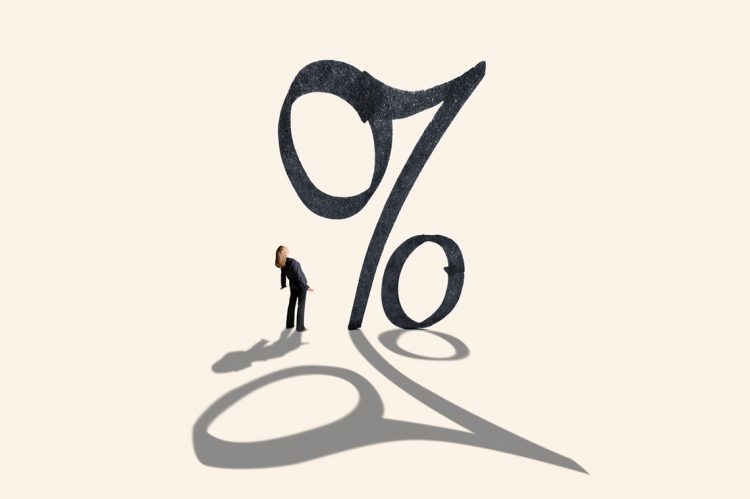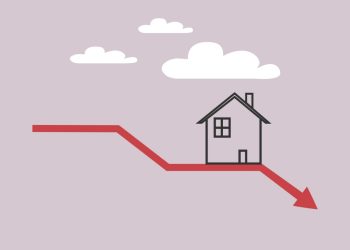There was a time last year when the term “transitory” was commonly used when federal officials discussed elevated inflation. That has proven somewhat of a misnomer in recent months as inflation has climbed, and officials have raced to reel things back in with interest rate hikes that have sent ripples into several markets.
Wednesday marked more of the same as the Fed announced that it would raise federal funds rates by another 75 basis points, with further increases expected as officials try to achieve a “soft landing” for the overheated economy while staving off a looming recession.
Not only does this mark the second consecutive month that officials have responded to the record-level inflationary environment with such a significant rate increase, but initial reports suggest that the increases in July and June are the most stringent moves since the early 1990s.
According to a post-meeting statement, the Fed indicated that it has seen signs that “spending and production have softened.”
“Nonetheless, job gains have been robust in recent months, and the unemployment rate has remained low,” the statement said. “Inflation remains elevated, reflecting supply and demand imbalances related to the pandemic, higher food and energy prices, and broader price pressures.”
The Fed also noted that the persisting conflict between Russia and Ukraine has continued to impact the global economy and add upward pressure on inflation, which hit 9.1% in July.
In a press conference following the Fed’s announcement, Powell acknowledged that the growth of inflation has continued to disappoint the Fed, which has been evident in the “more aggressive” approach with its planned rate hikes.
“We did judge that a 75-basis-point increase was the right magnitude in light of the data and in the context of the ongoing increases in the policy rate that we’ve been making,” Powell said in response to questions about the Fed’s aggressive stance on monetary policy in recent months.
“We wouldn’t hesitate to make an even larger move than we did today if the committee were to conclude that that was appropriate,” Powell added.
Since starting its rate hikes in March, the Fed has noticeably adjusted from its more subdued stance on reeling inflation. That was evident after June’s inflation data came out and pressured the Fed to shift from a 50-basis-point hike to 75 basis points.
While Wednesday’s announcement marked the second consecutive rate hike at that pace, it also suggests that the Fed may have underestimated the situation.
“Making appropriate monetary policy in this uncertain environment requires a recognition that the economy evolves in unexpected ways,” Powell said. “Inflation has obviously surprised to the upside over the past year, and further surprises can be in store.”
Determined to get inflation in check, Powell also telegraphed that the Fed is willing to make another “unusually large increase” in rates in the next meeting if the data doesn’t improve.
“We will strive to avoid adding uncertainty to what is already an extraordinarily challenging and uncertain time,” Powell said.
When asked how the Fed would weigh the “expected decline” in CPI inflation because of a possible drop in commodity prices, Powell said the committee would keep its eye on indications of a decline in inflation.
“These rate hikes have been large and have come quickly, and it’s likely that their full effect has not been felt by the economy, so there is probably some additional tightening in the pipeline,” he said, adding that the FOMC feels that they need to get the policy “at least to a moderately restrictive level.”
In light of the Feds announcement, several real estate and lending economists have begun weighing in on the potential implications for the market, which has largely seen a cooling effect as mortgage rate surges have exacerbated housing affordability in recent months.
“The housing market has slowed considerably over the past month as rate increases have taken hold,” said Mike Fratantoni, SVP and chief economist for the Mortgage Bankers Association. “We expect that this slower pace will remain through the summer, but buyers could return later this year if the Fed’s plans are better understood by the market and lead to less rate volatility.”
Fratantoni also said the ongoing reduction in the Fed’s balance sheet, including its holdings of MBS, is another factor putting upward pressure on mortgage rates.
Ruben Gonzalzs, chief economist for Keller Williams, echoed similar sentiments in a statement, adding that the path for mortgage rates is less well-defined as the Fed continues increasing interest rates.
“Mortgage rates have historically moved closely with 10-year Treasuries; however, over the last several months, the spread between the two has widened by a full percentage point,” he said.
National Association of REALTORS® (NAR) Chief Economist Lawrence Yun argued that further damage to mortgage rates is unlikely despite the large rate hike following Wednesday’s meeting.
“The long-term bond market, off of which mortgage rates are generally priced, has mostly priced in all future actions by the Fed and may have already peaked with the 10-year Treasury shooting up to 3.5% in mid-June,” Yun said. “It is at 2.8% a few minutes after the Fed’s decision on its new monetary policy.”
According to Yun, the 30-year fixed mortgage rate could settle at 5.5% to 6% for the remainder of the year—admittedly a sizable growth from the same period last year.
Danielle Hale, chief economist for realtor.com®, was left with a few questions following the Fed’s announcement, including “how much more is needed, and when might the economy start to see the effect of rate increases?”
“Today’s statement reiterated the Committee’s expectation that ‘ongoing increases in the target range will be appropriate’ and that the Fed is ‘strongly committed’ to bring inflation back in line with its 2% goal,” Hale said. “For consumers, this means that unless the economy shows additional signs of tipping into a recession, mortgage rates are likely to trend higher, which will be a drag on housing demand.
“In fact, June saw declines in new home sales, existing home sales and the more forward-looking pending home sales,” Hale continued. “Amid slowing demand and higher costs, there are some bright spots for home shoppers. The number of homes for sale continues to grow, registering 18.7% higher than a year ago in June and continuing that trend in more recent weekly data. While the options are more expensive and more costly to finance, the growing number will help the real estate market rebalance, giving potential buyers a much-needed refresh.”












